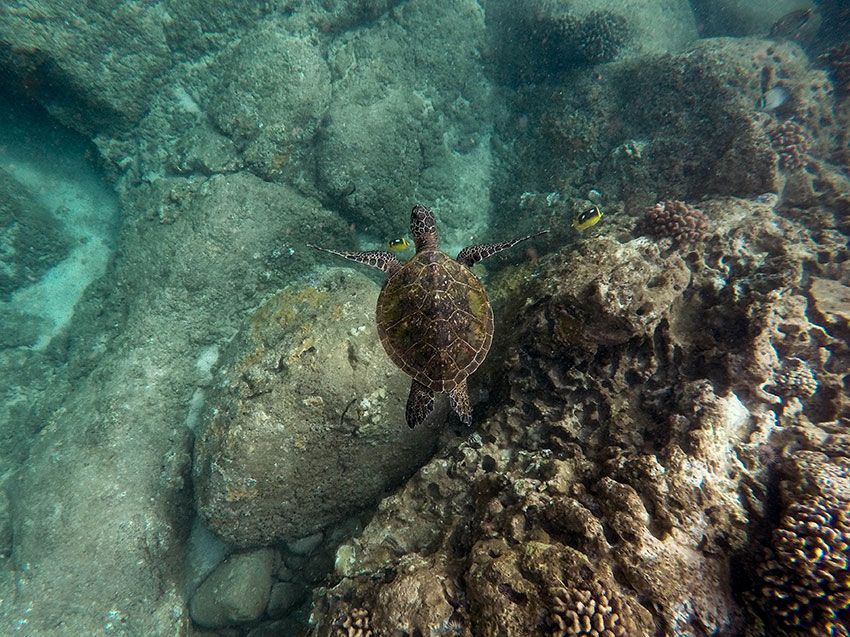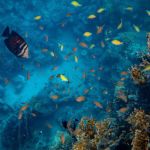Palau (Belau) is a group of islands in the Micronesia area of Oceania, to the southeast of the Philippines. Palau enjoys a tropical climate all year round with an annual mean temperature of 82°F (28°C), although rain falls more frequently between July and October, there is still much sunshine. Typhoons are rare, as Palau is outside the main typhoon zone.
Tourism is Palau’s most important industry, and it is one of the wealthiest nations in the Pacific. It’s a magnet for tropical vacationers and a revered UNESCO World Heritage site.
President Remengesau declared most of Palau’s territorial waters, the size of California, a marine sanctuary in 2015.
The Palau Roman Tmetuchl International Airport is connected by the Friendship Bridge to the main city of Koror. The larger and more luxurious resorts are set closest to the dive sites.
The capital of Palau is Ngerulmud. It has only been the capital city since 2006. The city of Koror previously held the title of capital. Palauan are making the largest ethnic group of the country. Other minority ethnic groups include Chinese, Vietnamese, White, Carolinian, and Filipino.
Palauians are known for their hospitality, and they are largely very happy to welcome and show respect for foreign visitors and cultural differences. However, this respect should be returned. Visitors should not violate historic areas, pollute the environment, harm the ocean, or denigrate the people or local culture.

Photo credit: Matt Kieffer / Flickr
Scuba Diving in Palau
Palau is also one of the few places in the world to see the nautilus. Don’t forget to check out the many shipwrecks which are littered with nudibranch, scorpionfish, pipefish and other critters.
The diving season is all year round, but the best time to dive Palau is during the “dry” season, between October – June.
This is one of the most beautiful island destinations on the planet and also one that is renowned for its incredibly diverse dive sites.
Kayak or snorkel tour of the Rock Islands
The famous Rock Islands are a maze of unsurpassed beauty—tropical gardens atop limestone ridges set in glass-clear waters.
From Koror you can take easy day-trips to the jungle-capped Rock Islands, to Turtle Cove, Soft Coral Arch, and Ngemelis Wall. The only free public place in Koror where you can find coral reef is Icebox Park, located within walking distance from the port.
The best way is to explore kayaking is by joining tours. Kayaks are specially developed for paddling on open waters of lakes or oceans.
It is a snorkeler’s paradise, and expeditions can take you on an in-depth exploration of Palau both above and below the water’s surface.
Ngardmau Falls
The Ngardmau Waterfall is located on the island of Babeldaob and it is Palau’s tallest waterfall.
The waterfall was designated the “Taki” Conservation Area in 2005 and expanded in the area in 2010. The conservation area includes a variety of terrestrial habitats, with upland old-growth forest, savanna, river, swamp forest, and secondary forest. The conservation area is part of the Middle Ridge Important Bird Area, and the endangered Micronesian megapode has been observed there, in addition to other endemic birds.
The constant foot traffic on the dirt trail has substantially increased erosion and sedimentation into the river. This threatens the community water source, river fauna, and marine flora and fauna at the river mouth.

Photo credit: Abasaa / wikimedia
Badrulchau Stone Monoliths
There are 52 basalt megaliths, some of them weighing over 5 tonnes. The purpose of these monoliths are unknown, many believe that they served as supports of what could have been the largest bai (meeting house) ever built in Palau.
Six of these stone monoliths have rough faces carved into them. Island settled over 1,000 years before by inhabitants of the Philippines

Photo credit: Abasaa / Wikipedia
Explore the Belau National Museum
Belau National Museum is Micronesia’s oldest museum. To get closer to the customs and an introduction to the natural history of the region or browse the extensive exhibits focusing on Palauan art, communities, and traditions. Here you’ll find an impressive array of specimens, artifacts, and models inform you about the area’s diverse animal and plant life, spiritual and ceremonial history.
The museum was established in 1955 and it was originally located in the former Japanese Administration Weather Bureau building and later relocated to a new building. The museum exhibits artifacts from all aspects of the local life of Palauan people.

Photo credit: Michael / Flickr
Swim in the Milky Way lagoon
The Milky Way is located in the rock islands of this Micronesian country and is famous for its being a natural spa treatment. Locals and tourists look forward to applying the white limestone mud from the lagoon all over their bodies. Locals claim that applying the mud will make you lose ten years off your age.
The Milky Way Lagoon also offers a stunning view of natural beauty and it is a nice place to have a soothing, relaxing and peaceful time.
Visit the Airai Bai
Palau’s oldest bai is over 100 years old, 21m long and 6m wide. Airai Bai is a men’s meetinghouse where we can gain a unique insight into local customs.
Palau was first inhabited by Austronesian settlers and it developed a unique society where women often played a dominant rule in government and religion.
The assembly hall is 79 by 20 feet, rising to a height of 40 feet. The roof is woven from nipa leaves and tropical woods are used across the floors and walls.
Etpison Museum
Learn about Palauan Culture at the Etpison Museum. The museum is open 9-5 Monday – Saturday and there is a $10 entry fee.
The museum features cultural displays with dioramas, and includes displays on the history and foreign influence, traditional money types, the famous 1st childbirth ceremony, Palau and Yap canoes.
The museum opened the Captain Wilson Art Gallery at the Palau Pacific Resort in April 2017, which showcases Palau’s nature and culture through the photography of Mandy Etpison.
Do you need a Palau visa?
Visas are not required for USA, UK, CAN and AUS. US citizens are issued a free one year visa on arrival. UK, AUS and CAN citizens are issued a free 30-day tourist visa upon arrival.
Want to learn more about Palau? Check our other posts about Palau.
























